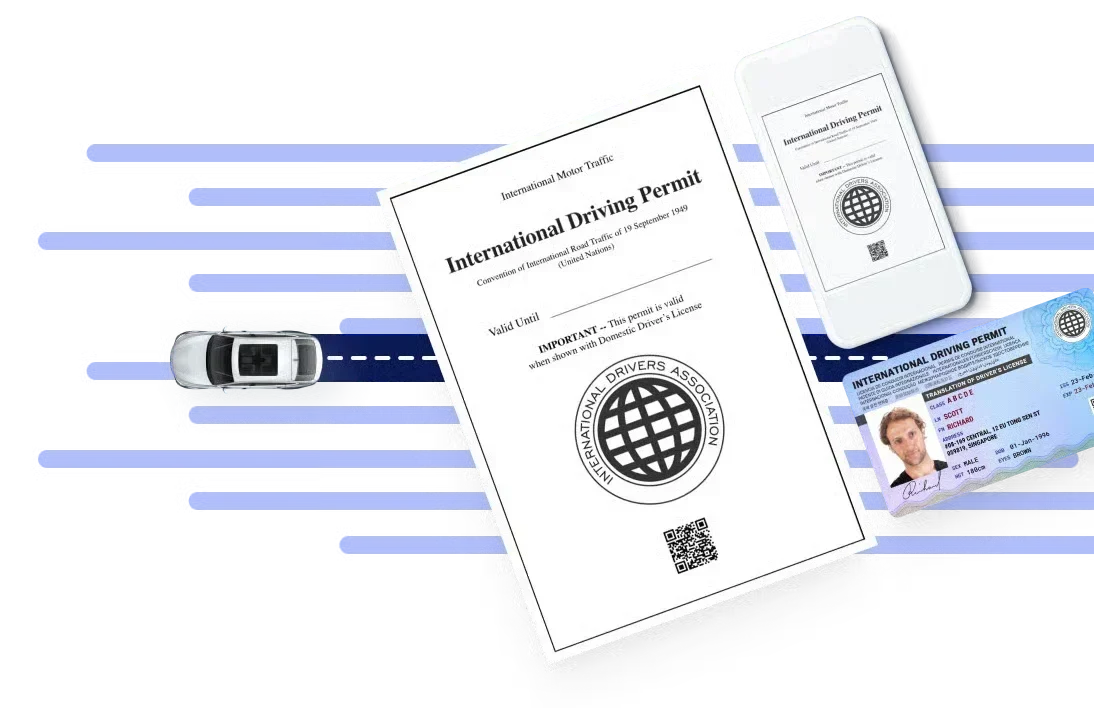Maneuvering Metro Manila is not for the faint of heart, particularly for newcomers still learning the ropes of commuting. Poor urban planning, inadequate road infrastructure, and the lack of people-oriented traffic management all contribute to a frustrating and seemingly perpetual gridlock. Ask any local, and they would say getting stuck in Manila traffic during rush hour feels like a death sentence, and it does feel that way most of the time.
However, you should still explore this vibrant city, and you could even take a Manila day trip if you’re up for it. With numerous public transportation options available, navigating the area is not only possible but also sheds some light on the daily lives of many Filipinos—an essential aspect of Filipino culture.
From the iconic jeepneys to the modern MRT and LRT systems, each mode of transportation offers a unique glimpse into the local culture. In this guide, you’ll learn the best ways to get around Manila, whether commuting to work, exploring bustling business districts, or simply seeing the sights of this lively metropolis.
Different Kinds of Transportation Options in Metro Manila
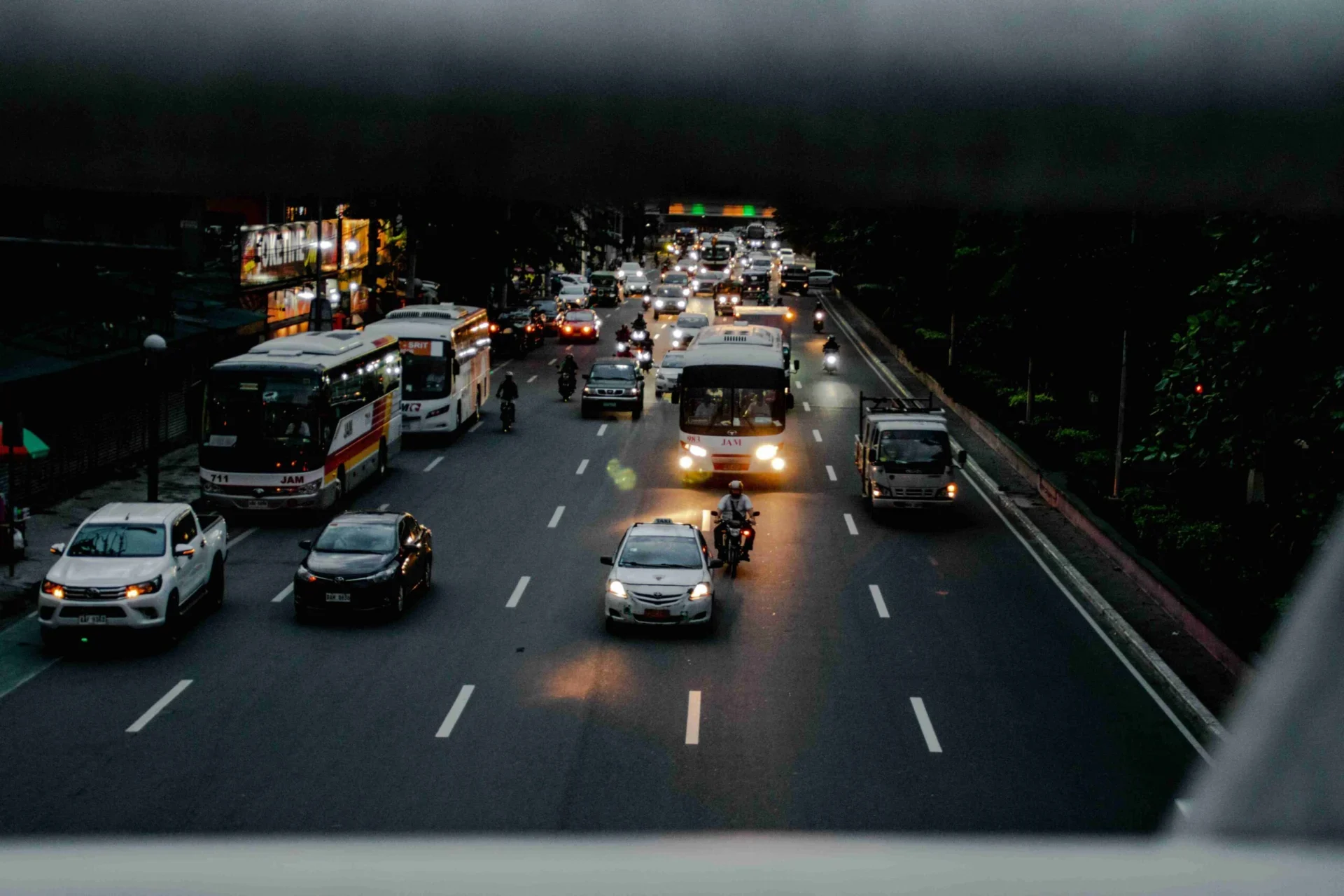
Source: Photo by iSawRed on Unsplash
From buses to taxis, Metro Manila offers a wide range of transportation methods that will quickly get you from point A to point B.
Metro Manila Bus
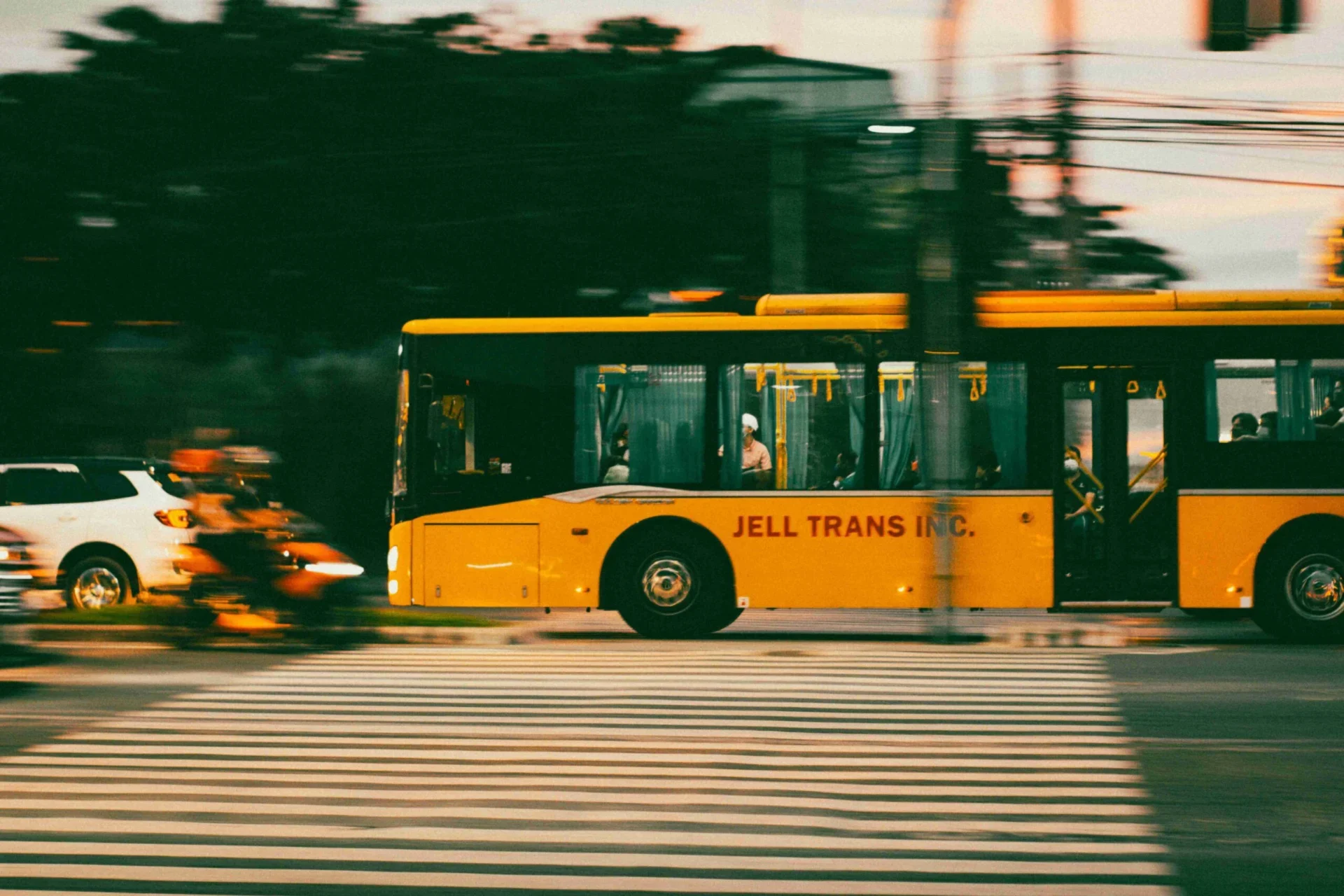
Source: Photo by Gerald Escamos on Unsplash
Metro Manila buses are popular among commuters, especially on major routes like EDSA and medium-to-long distance journeys. Manila buses come in different types, including Point-to-Point (P2P), shuttle, and the EDSA Carousel, a bus rapid transit system. There are also regular and air-conditioned buses, with varying fares depending on the location.
LRT & MRT Trains
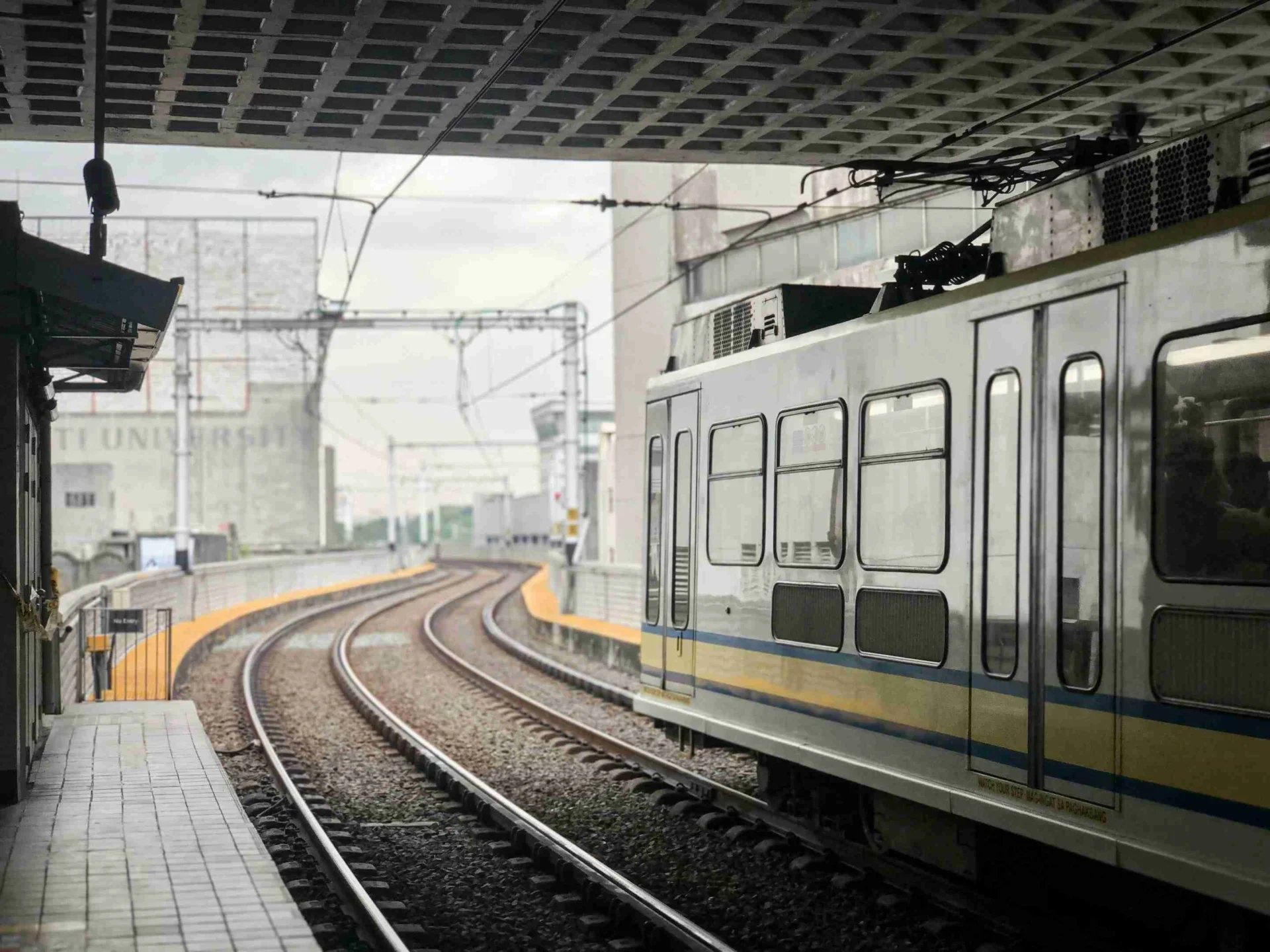
Source: Photo by Juan Paolo Cruz on Unsplash
The Light Rail Transit (LRT) and Metro Rail Transit (MRT) systems are essential for navigating Manila’s traffic. The LRT system comprises two distinct lines: LRT-1, known as the Green Line, features 19 operational stations trailing Metro Manila, while LRT-2, or the Blue Line, has 13 stations running from east to west. If you’re only going to another area in the Metro, like Baclaran or Caloocan, these lines can take you there.
LRT-1 Stations
- Baclaran
- EDSA
- Libertad
- Gil Puyat
- Vito Cruz
- Quirino Avenue
- Pedro Gil
- United Nations
- Central Terminal
- Carriedo
- Doroteo Jose
- Bambang
- Tayuman
- Blumentritt
- Abad Santos
- R. Papa
- 5th Avenue
- Monumento
- Balintawak
- Roosevelt (temporarily closed)
| Station | First trip | Last trip |
|---|---|---|
| Baclaran | 4:30 AM | 9:15 PM |
| Balintawak | 9:30 PM |
LRT-2 Stations
- Recto
- Legarda
- Pureza
- V. Mapa
- J. Ruiz
- Gilmore
- Betty Go-Belmonte
- Araneta Center-Cubao
- Anonas
- Katipunan
- Santolan
- Marikina
- Antipolo
| Station | First trip | Last trip |
|---|---|---|
| Recto | 5:00 AM | 9:00 PM |
| Antipolo | 8:30 PM |
The MRT Line, or MRT-3 (Yellow Line), on the other hand, runs along the extensive route of Epifanio de los Santos Avenue (EDSA). The line has 13 points and serves major business districts and transport hubs. Compared to the LRT, this line is more suitable for longer journeys along EDSA.
MRT-3 Stations
- North Avenue
- Quezon Avenue
- GMA Kamuning
- Araneta Center-Cubao
- Santolan Annapolis
- Ortigas
- Shaw Boulevard
- Boni
- Guadalupe
- Buendia
- Ayala
- Magallanes
- Taft Avenue
| Station | First trip | Last trip |
|---|---|---|
| North Avenue | 4:40 AM | 9:30 PM |
| Taft Avenue | 5:26 AM | 10:16 PM |
Jeepneys
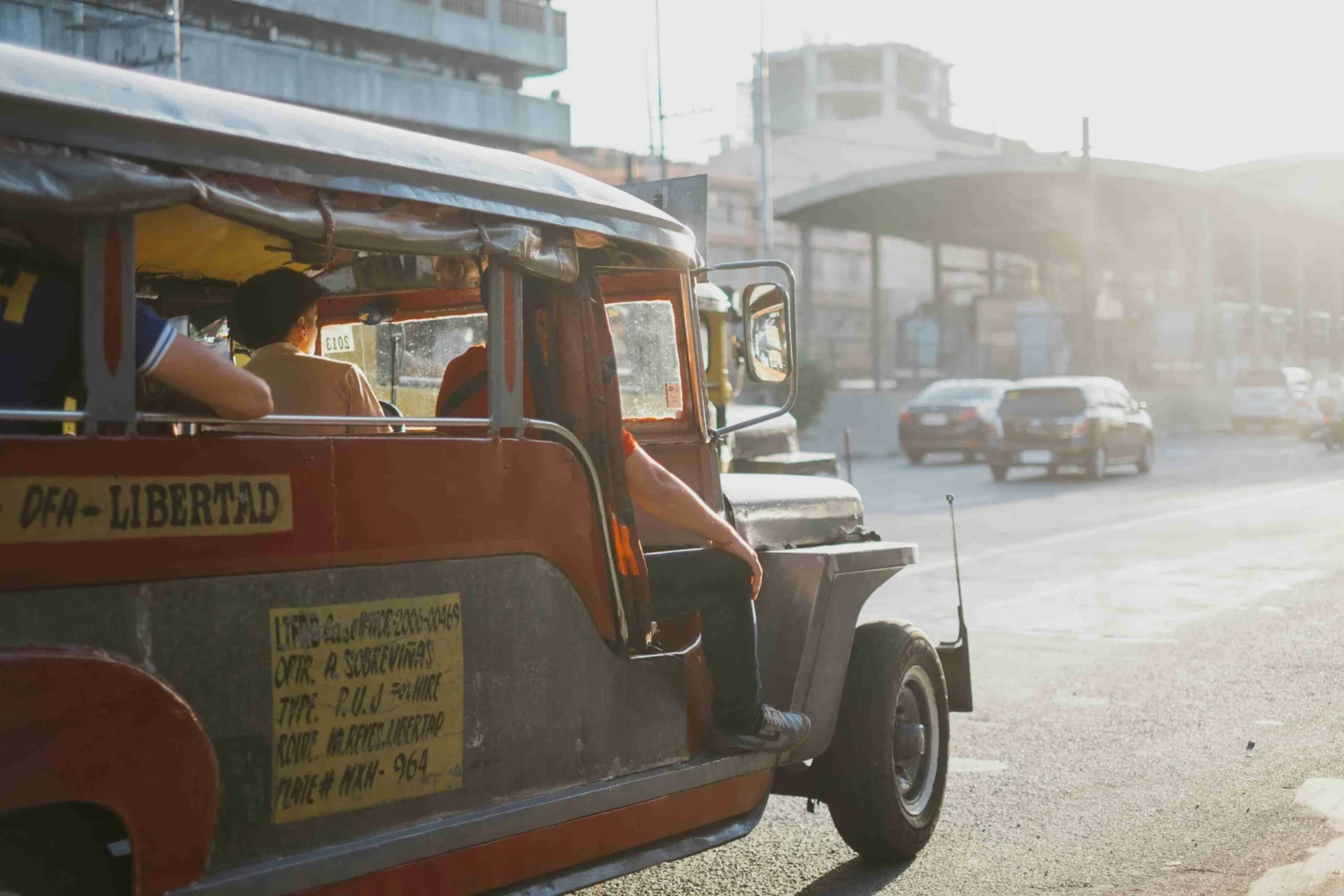
Source: Photo by Yannes Kiefer on Unsplash
Jeepneys are a staple of mass transit in Manila and throughout the country. Embellished with vibrant stickers and hand-painted designs, Jeepneys, or simply Jeep, is an iconic symbol of Philippine culture. If you’re seeking an authentic Filipino experience, take advantage of riding in what the locals call the undisputed King of the Road.
To make the most of a trip, drivers and barkers would typically squeeze all passengers into the vehicle, so expect to be touching elbows with the person beside you. Additionally, you pay by giving your fare directly to the driver, and if it’s crowded, ask your fellow passengers to pass it on to the driver by saying, “Bayad po!” which means “Here’s my payment!” If you’re nearing your stop, you should call out “para po,” which means “stop/pull over, please.”
Public Utility Vehicles
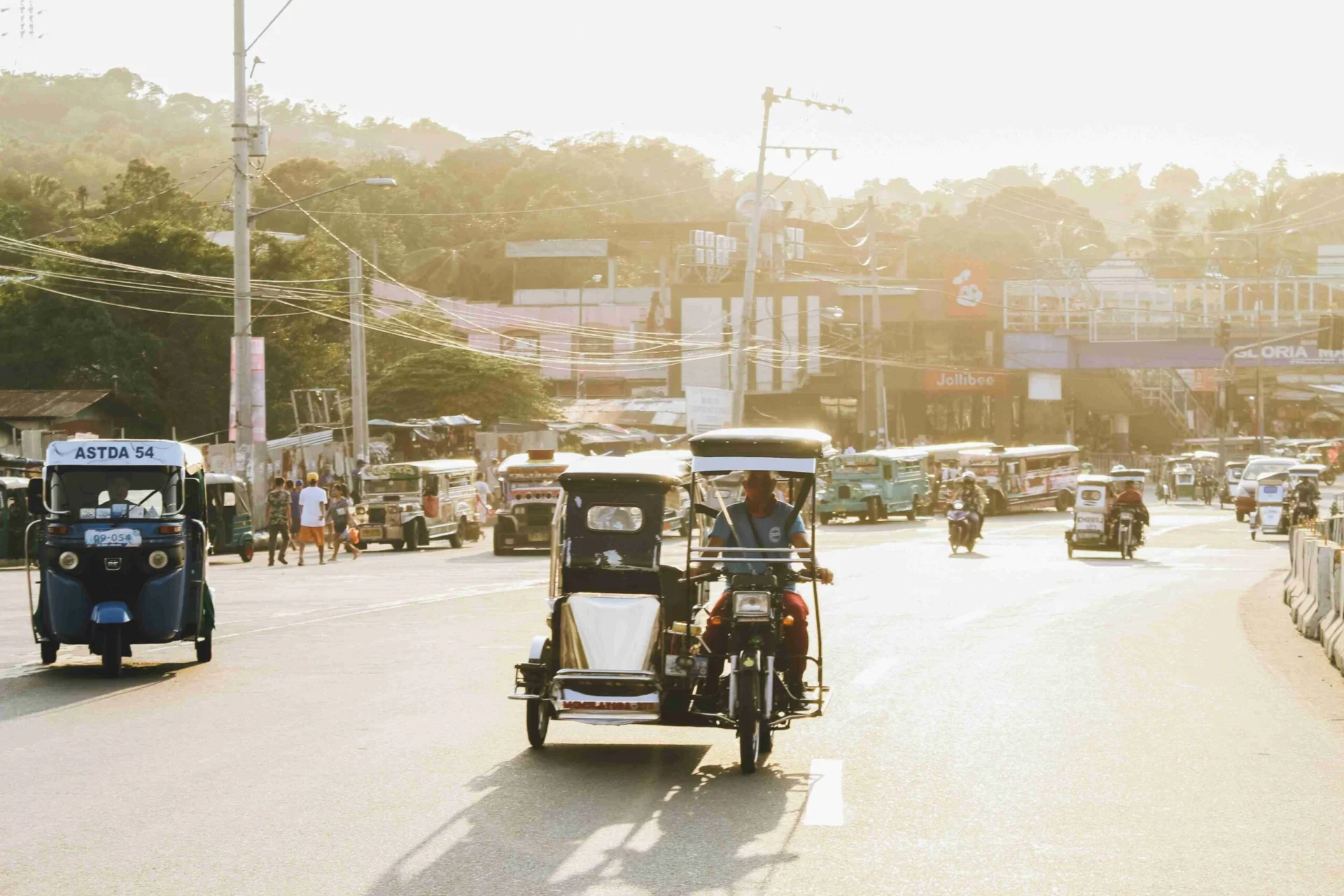
Source: Photo by Lawrence Biñas
Public utility vehicles (PUVs) include vans and tricycles that serve specific routes. Vans are ideal for reaching certain neighborhoods, while tricycles can navigate narrow streets and short distances. Just like jeepneys, confirm the route with the driver first.
Taxi
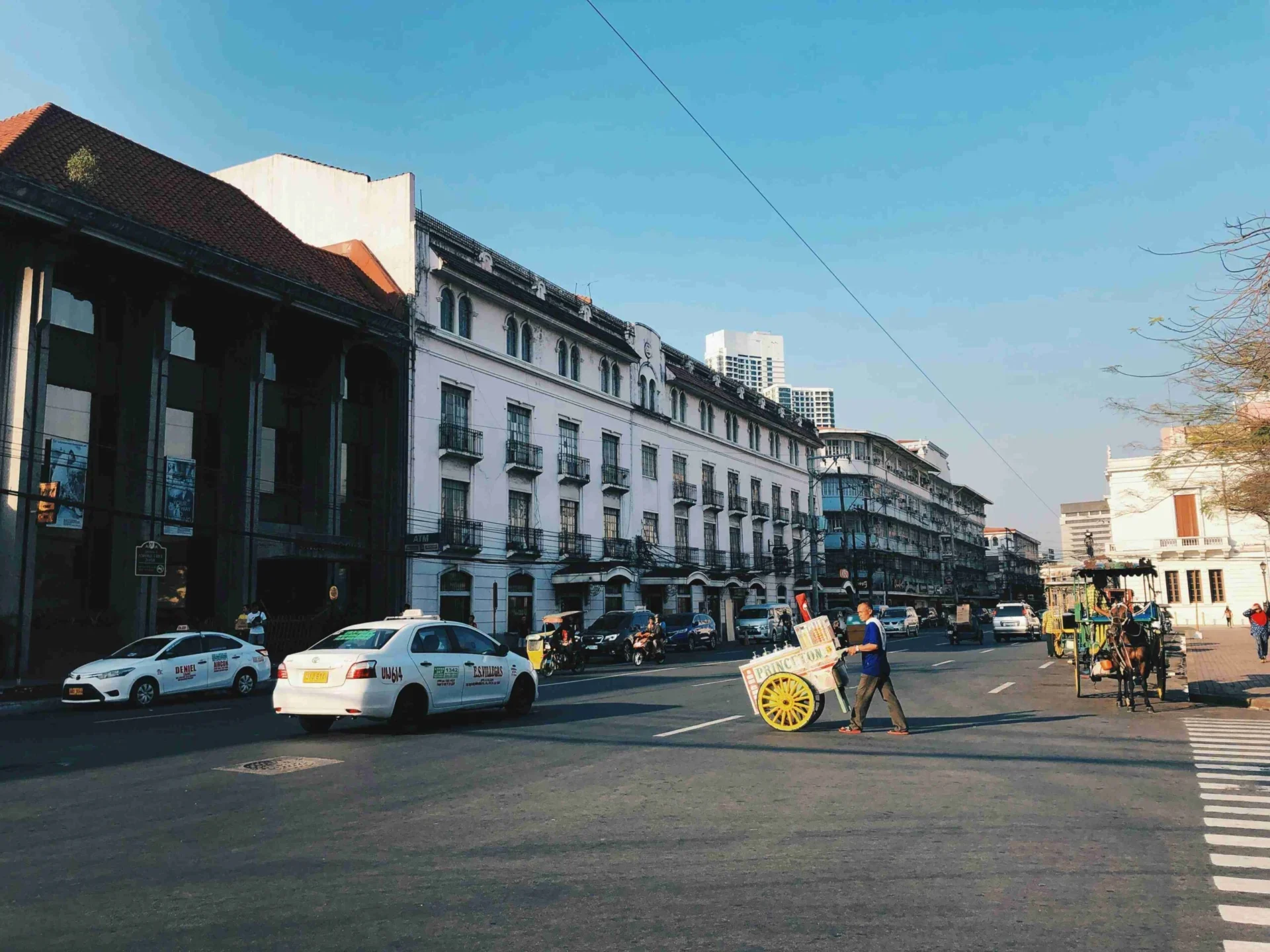
Source: Photo by Melvin Glinoga on Unsplash
Taxis are widely available throughout Metro Manila and provide a great alternative to taking you to your destination. There are two kinds of taxis: white regular taxis, found all over the Metro, and yellow airport taxis.
When taking a taxi, make sure the meter works. Ask the driver to turn it on, and if they claim it is broken or refuse to, simply get out and hail another one. Unfortunately, some drivers may attempt to overcharge foreigners, so it’s wise to ask a local about the expected fare before hopping in.
Alternative Ride-Hailing Services
Stuck in heavy traffic? Let these ride-hailing services take you across the routes in Metro Manila stress-free.
Grab
Grab is the leading ride-hailing app in the Philippines, letting you navigate Metro Manila at the tap of a button. It offers various vehicle options, from cars to motorbikes, to cater to different budgets and needs. Although this option is the priciest, it is also the safest and most convenient choice compared to taxis.
Angkas
If you’re in a hurry, you could book a ride on the Angkas app to zoom you around the city, even through bumper-to-bumper traffic. Late for your work at Pasay? No worries because this app is a lifesaver, and you can even enjoy seamless card payment with their app!
Joyride
Filipinos like convenience, so you won’t be running out of local transportation options in Manila anytime soon. Joyride is an alternative motorcycle taxi service often considered cheaper for most passengers. Depending on demand and your location, it may have fewer riders available to pick you up.
Move It
Say goodbye to crowded seating and the sweltering heat of traditional public transportation with Move It. Owned by Grab, Move It is another motorcycle taxi-hailing app that provides quick and easy maneuvering within the city. It is the cheapest out of the bunch and is growing in popularity among the Transportation Network Vehicle Service (TNVS) community.
Commuting Tips
Heed these tips the next time you’re considering braving Manila traffic.
- Plan your route: Familiarize yourself with train and bus routes to save time.
- Know your carriage: The first car on every MRT and LRT is reserved for women, the elderly, adults with children, and people with disabilities. Remember this before queueing!
- Get a Beep card: A Beep card is a reloadable, tap-and-go card that you can use to pay for various transportation options in the Philippines, including the different train lines, numerous PUVs and city buses (such as P2P, EDSA carousel, and provincial), ferries, and select convenience stores. You can buy them at train stations for a small cost of ₱30 ($0.53).
- Dress comfortably: Wear light and breathable clothing to cope with the Philippines’ humid climate.
- Travel off-peak: Avoid rush hours to beat the crowd as much as possible.
- Carry small change: When paying for jeepneys, buses, and other transport, prepare small changes.
- Have ride-booking apps handy: Having all the transport apps mentioned on your phone is good to have more options when going out.
- Stay alert: Be aware of your surroundings and secure your belongings.
- Drink water: Stay hydrated if you spend much time in the scorching heat.
Frequently Asked Questions (FAQs)
Are train stations in the Philippines easy to understand?
Trains in the Philippines are pretty straightforward. You’ll find signs and posted maps to help guide you. If you get lost, you can always ask for assistance from the staff at the ticketing booth or any security marshals.
Where can I find the routes used by public transportation drivers?
Check the routes for buses and vans at bus stops or transport terminals. A barker nearby would usually call out the destinations, or you can find them on the side of the bus’s windshield. The same is true for jeepney routes.
Is it worth getting a Beep card?
The all-around transport card is handy if you travel a lot across the Metro or plan to stay longer in the Philippines.
How do I pay for transportation? Can I use my debit or credit card?
Only ride-sharing platforms accept card payments. For most public transit, stick with cash or the Beep card. When paying for bus fares, wait for the conductor to come to you before paying. For vans, please pay at the designated booths.
Is there any public transportation etiquette I should know?
Let passengers alight first before boarding, whether taking the train, PUV, or jeep. Consider other passengers on the train, modulate your voice, and keep your phone silent.
I need to figure out how to ride a jeepney. Any tips?
Figuring out how to ride a jeepney can be intimidating at first. You want to hail a jeepney like you would hail a taxi. Most people would then like to sit near the entrance (beside the seats reserved for the elderly and PWD) because when you get behind the driver, consider yourself the designated Good Samaritan passing the fares.
You will frequently see signs that say “Barya lang po sa umaga,” which translates to “Only small change or coins in the morning.” Drivers often need spare change if passengers pay large bills early in the day. Additionally, if you’re hesitant to say “Para po” when you want to get off, you can tap the metal bar on the vehicle’s roof with a coin to signal the driver to pull over.
How to be safe when commuting?
Manila is generally a safe city, but like any major urban area in the Philippines, it’s important to remember that you can never be too cautious. Instead of bringing your whole wallet, use a coin wallet. Additionally, you should keep your bag in front of you when passing through big crowds and stay vigilant of your surroundings at all times.
Are there apps that can help me navigate Manila?
Sakay.ph is your go-to app for commuting in the Metro. It has real-time transit directions for jeepneys, trains, and ferries. If taking routes accessible via LRT-1, install IkotMNL, which tracks live arrivals, departures, fares, and crowds.
On the other hand, if you want to explore beyond the capital, you should download Moovit, a global mobility app that helps people travel all around the world, including the Philippines. Of course, you can always go right with the trusty Google Maps. Download the areas to use them on the go, even without Wi-Fi.
For additional resources, check out various online Facebook groups and forums. Filipinos are very helpful, especially towards foreigners, so they’ll gladly assist you with your travel woes.
Do I need to buy a local SIM card?
Yes! Most places, such as cafes and malls, offer public Wi-Fi, but for better connectivity, consider purchasing local SIM cards with flexible plans tailored to your needs.
Be A Master Manila Commuter
Whether taking the train to Makati, Quezon City, Pasig, or a PUV to small Las Piñas or Parañaque neighborhoods, commuting in Manila is no easy feat. It’s perfectly reasonable to choose to drive, especially given how car-centric the city is.
Want to explore the city at your own pace? Consider renting a car. Driving in the Philippines is a new experience compared to taking local mass transit. Better obtain a global driving document while at it for the seamless travel you deserve!

